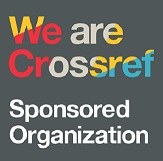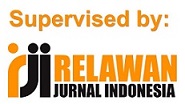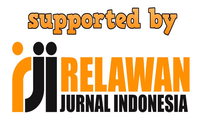LANGUAGE IDENTITY AND CULTURAL INTEGRATION AMONG RURAL-TO-URBAN UNIVERSITY STUDENTS
Abstract
Keywords
Full Text:
PDFReferences
Atobatele, F. A. (2024). The dynamics of language shifts in migrant communities: Implications for social integration and cultural preservation. International Journal of Applied Research in Social Sciences, 6(5), 844–860. https://doi.org/10.51594/ijarss.v6i5.1106
Berry, J. W. (2001). Acculturation: When individuals and groups of different cultural backgrounds meet. Perspectives on Psychological Science, 5(4), 472–481. https://doi.org/10.1177/1745691610373075
Berry, J. W., & Sabatier, C. (2010). Acculturation, discrimination, and adaptation among second-generation immigrant youth in Montreal and Paris. International Journal of Intercultural Relations, 34(3), 191–207. https://doi.org/10.1016/j.ijintrel.2009.11.007
Blommaert, J. (2010). The sociolinguistics of globalization. Cambridge University Press.
Braun, V., & Clarke, V. (2006). Using thematic analysis in psychology. Qualitative Research in Psychology, 3(2), 77–101. https://doi.org/10.1191/1478088706qp063oa
Creswell, J. W. (2014). Research design: Qualitative, quantitative, and mixed methods approaches (4th ed.). New York: Sage Publications.
Denissova, G. V., & Rudenko, E. (2019). Developing secondary language identity in context. Psychology in Russia: State of the Art, 21–30. https://doi.org/10.11621/pir.2019.0102
Duff, P. A. (2015). Transnationalism, multilingualism, and identity. Annual Review of Applied Linguistics, 35, 57–80. https://doi.org/10.1017/S026719051400018X
Eidse, F., & Sichel, N. (2004). Unrooted childhoods: Memoirs of growing up global. Nicholas Brealey Publishing.
Fishman, J. A. (1991). Reversing language shift: Theoretical and empirical foundations of assistance to threatened languages. Multilingual Matters.
García, O., & Wei, L. (2014). Translanguaging: Language, bilingualism and education. Palgrave Macmillan.
Gee, J. P. (2013). Games for Learning. Educational Horizons, 91(4), 16-20. https://doi.org/10.1177/0013175X1309100406
Hall, S. (2018). Essential essays (Vol. 2). Duke University Press.
Holmes, J. (2013). An introduction to sociolinguistics (4th ed.). Routledge.
Merriam, S. B. (2009). Qualitative research: A guide to design and implementation (4th ed.). John Wiley & Sons.
Miller, R. L., & Collette, T. (2019). Multicultural identity development: Theory and research. In K. D. Keith (Ed.), Cross-cultural psychology: Contemporary themes and perspectives (2nd ed., pp. 509–523). Wiley-Blackwell.
Ortega, L. (2008). Understanding second language acquisition (1st ed.). Routledge.
Suryani, A. (2018). Language and identity: Promoting Dolly’s community identity through language use. In Prasasti 2018: Proceedings (pp. 318–321). Atlantis Press. https://doi.org/10.2991/prasasti-18.2018.42
Siebenhütter, S. (2023). The multilingual profile and its impact on identity: Approaching the difference between multilingualism and multilingual identity or linguistic identity. Ampersand, 10, 100123. https://doi.org/10.1016/j.amper.2023.100123
Uriarte, J. R. (2021). A behavioural model of minority language shift: Theory and empirical evidence. PLOS ONE, 16, e0252453. https://doi.org/10.1371/journal.pone.0252453
Yin, R. K. (2014). Case study research: Design and methods (5th ed.). Sage Publications.
DOI: https://doi.org/10.30743/ll.v9i1.11075
Refbacks
- There are currently no refbacks.
Fakultas Sastra
Universitas Islam Sumatera Utara (UISU), Medan
Jl. Sisingamangaraja Teladan Medan 20217
Telp. (061) 7869911, e-mail: language_literacy@sastra.uisu.ac.id









